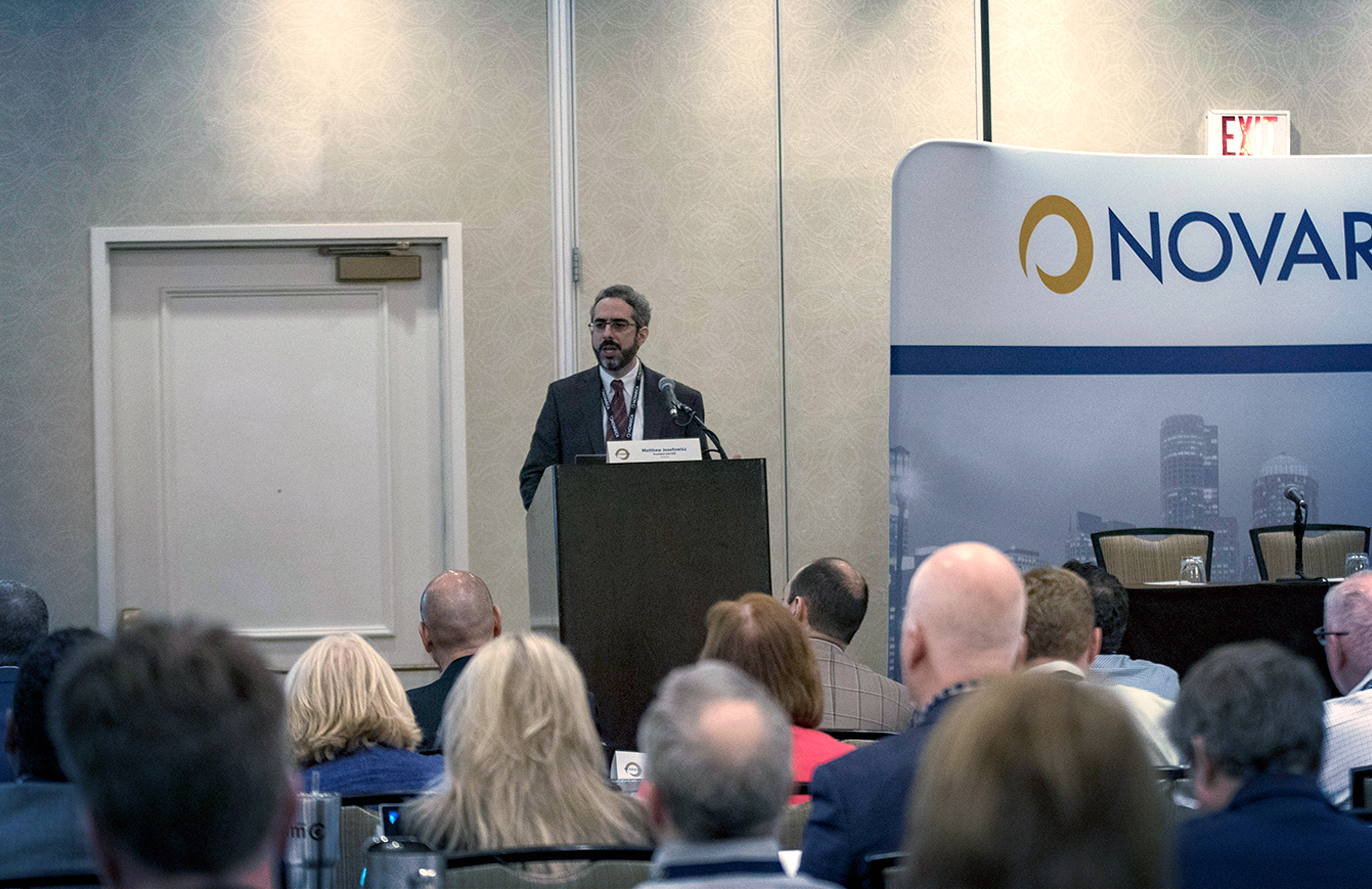

More than 100 insurer CIOs and senior IT team members joined us last week for our 12th Annual Novarica Insurance Technology Research Council meeting for two days of networking and knowledge sharing.
My keynote presentation focused on technology, innovation, and the future of insurance, with a review of the conceptual frameworks, data, research, and examples that we bring together to help insurer IT leaders make better decisions and communicate more effectively with leaders of other business units. For many insurer CIOs, the biggest challenge in IT leadership is not technology, it’s leadership. It’s helping the organization do the right thing and helping the organization understand why they need to do the right thing. Our frameworks are about helping insurers fulfill that mission.
We started with a new framework called the Three Levers of Value. There are only three ways to create value and insurance and technology is behind all three. You can either sell more, you can manage risk better, or you can cost less to operate. These are the things that executive leadership cares about, that investors and boards care about, that leaders of other business units care about.

When we’re talking about selling more, one of the ways to sell more is by expanding the market. Technology can enable insurers to serve new segments that were previously unreachable, unprofitable, or unknown. The second way to sell more is to introduce better products, which is why insurers are focused on speed to market. Another way to sell more is to offer better service — insurers traditionally have thought of their products primarily as a risk transfer product but if you look at any insurer marketing department, that’s not what they’re selling. They’re selling the feeling of being covered.
The next lever is managing risk better, and that means improve pricing and risk selection. We’re seeing an the incredible growth of the use of predictive scoring and analytics in underwriting and claims. All of this is going along with the growth and analytical capability and the growth in third party data.
There is another piece of managing risk effectively that is less common in terms of executive goals. It’s not going to show up in anybody’s P&L or bottom line this year, but companies that can think beyond the next quarter’s reduced operational risk can manage their risk better and thrive. This includes things like security and business continuity planning, avoiding and retiring technical debt, along with productivity systems and their role in attracting and maintaining talent.
Then, finally the third lever, the one that CFOs remember so fondly from the 90s, is that technology helps cut cost. One of the challenges is in most cases, technology is not helping insurers cut cost anymore. That is a big paradigm shift for people who have been executives for 20 years or more because in the ’90s in the first wave of the internet, digital was cheaper than paper, databases were cheaper than file rooms, the web was cheaper than mail, client-server was cheaper than mainframes and technology investments were in many cases about cost takeout. Today, technology investments are not about cost takeout anymore. Mostly, they are about deploying new capabilities, and that usually means new expense. Many COOs and CFOs are still wrestling with this paradigm shift.
This Three Levers of Value framework was a useful lens to discuss the evolution and value of digital, data, and core capabilities across the entire functional value chain described by the Novarica New Normal 100. It also framed the discussions around thinking about the value of Innovation and the application of emerging technology. Any Novarica client who would like a copy of the full keynote deck, please let me know at [email protected].
Add new comment